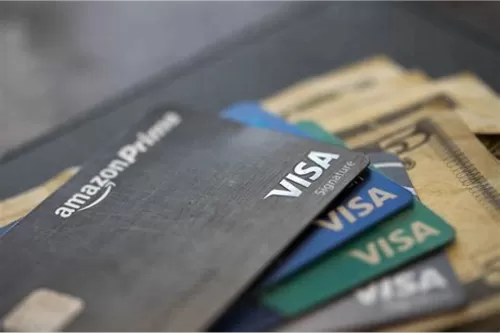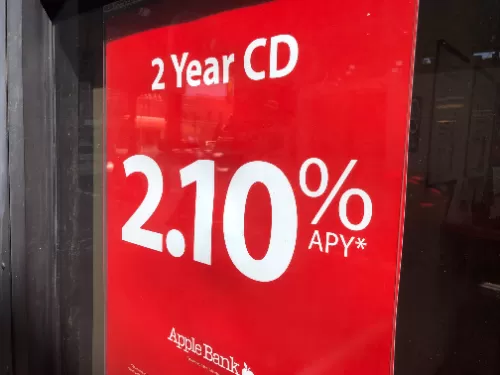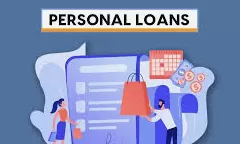Personal Loans in 2024: A Comprehensive Guide to Borrowing Smartly
Personal loans have become a popular financial tool for individuals looking to cover expenses such as home improvements, medical bills, or debt consolidation. In 2024, with the financial landscape constantly evolving, it’s essential to understand how personal loans work, their benefits, and how to apply for one. This guide provides a detailed overview to help you make an informed decision when considering a personal loan.

What is a Personal Loan?
A personal loan is an unsecured loan that individuals can use for a variety of purposes. Unlike mortgages or auto loans, personal loans do not require collateral. Instead, lenders assess your creditworthiness based on your income, credit score, and other financial factors. Loan amounts typically range from $1,000 to $100,000, with repayment terms between 12 to 84 months.
Common Uses of Personal Loans
Personal loans are versatile and can be used for various purposes. Here are some common reasons people take out personal loans:
Debt Consolidation: A personal loan can combine multiple high-interest debts, such as credit cards, into one manageable monthly payment at a lower interest rate.
Home Improvement: Many homeowners use personal loans to fund renovations or repairs, such as remodeling kitchens or fixing roofs.
Medical Expenses: When facing unexpected medical bills, personal loans can provide quick access to funds without tapping into savings.
Major Purchases: Personal loans are often used to finance large purchases like appliances, furniture, or technology.
Weddings or Vacations: Some individuals use personal loans to cover the costs of life events or dream vacations.
Types of Personal Loans
Understanding the different types of personal loans available can help you choose the best option for your needs. Here are some of the most common types:
a. Fixed-Rate Personal Loans
Fixed-rate loans have an interest rate that remains constant throughout the loan term. This means your monthly payments will stay the same, making it easier to budget. Most personal loans fall into this category.
b. Variable-Rate Personal Loans
Variable-rate loans have interest rates that can change over time, depending on market conditions. While these loans may start with lower interest rates than fixed-rate loans, the rate can increase, leading to higher payments.
c. Secured Personal Loans
Although most personal loans are unsecured, some lenders offer secured loans that require collateral, such as a car or savings account. These loans often come with lower interest rates but carry the risk of losing your asset if you fail to repay.
How to Qualify for a Personal Loan
Qualifying for a personal loan depends on several factors, including:
Credit Score: Lenders typically require a credit score of 600 or higher for approval. Borrowers with higher scores may qualify for lower interest rates.
Income: Lenders want to ensure that you have a stable income to repay the loan. They may ask for proof of employment or income, such as pay stubs or tax returns.
Debt-to-Income Ratio (DTI): Your DTI ratio compares your total monthly debt payments to your gross monthly income. Lenders prefer a DTI ratio of 36% or lower, though some allow higher ratios depending on your credit score.
Loan Amount and Term: The loan amount and repayment term you choose can affect your eligibility. Larger loan amounts or longer terms may require better credit or income.
Benefits of Personal Loans
Personal loans offer several advantages for borrowers in 2024, including:
No Collateral Required: Since most personal loans are unsecured, you don’t need to put up any assets, such as your home or car, as collateral.
Flexible Use: Personal loans can be used for a wide range of expenses, giving borrowers more flexibility compared to other types of loans.
Fixed Monthly Payments: Fixed-rate personal loans offer predictable payments, making it easier to budget.
Debt Consolidation: By combining multiple high-interest debts into a single loan with a lower interest rate, borrowers can save money on interest and pay off their debt faster.
Risks and Drawbacks of Personal Loans
While personal loans can be helpful, they come with certain risks:
Higher Interest Rates for Poor Credit: If you have a low credit score, you may be offered higher interest rates, which can make the loan more expensive over time.
Fees and Penalties: Many lenders charge fees, such as origination fees (typically 1-6% of the loan amount), and penalties for late or missed payments. Make sure to review the loan terms carefully.
Impact on Credit Score: Taking out a personal loan can temporarily lower your credit score, and missing payments can have a lasting negative effect on your credit report.
How to Apply for a Personal Loan
Applying for a personal loan in 2024 is easier than ever, thanks to online lenders and streamlined application processes. Here’s a step-by-step guide:
a. Check Your Credit Score
Before applying for a personal loan, review your credit report and score. If your score is below 600, consider taking steps to improve it before applying to increase your chances of approval and lower interest rates.
b. Compare Lenders
Shop around and compare multiple lenders to find the best loan terms, including interest rates, fees, and repayment terms. Be sure to consider both traditional banks, credit unions, and online lenders.
c. Prequalify for Loans
Many lenders offer prequalification, which allows you to see your potential loan terms without impacting your credit score. Prequalification helps you compare offers and choose the most affordable option.
d. Gather Documentation
Lenders may require various documents during the application process, including:
Proof of income (pay stubs, tax returns)
Employment verification
ID and proof of address
Bank statements
e. Submit Your Application
Once you’ve chosen a lender, submit your formal application, either online or in-person. The lender will conduct a hard credit inquiry, which may slightly lower your credit score.
f. Receive Loan Approval and Funds
If approved, you’ll receive a loan offer outlining the terms. Once you accept the offer, the lender will disburse the funds, typically within a few business days.
Personal Loans in 2024: Trends and Innovations
In 2024, personal loans continue to adapt to changing consumer needs and technological advancements. Here are some trends to watch:
a. Digital-First Lenders: Online lending platforms are becoming more prevalent, offering faster approvals, flexible terms, and personalized loan options through AI-driven algorithms.
b. Low-Interest Rate Environment: With interest rates relatively low, borrowers with good credit can lock in competitive rates for personal loans, making it a favorable time to borrow.
c. Green Financing: Some lenders are introducing personal loans specifically designed for eco-friendly purposes, such as solar panel installation or energy-efficient home upgrades.
Alternatives to Personal Loans
While personal loans can be a great option, they may not be the best fit for everyone. Consider these alternatives if you're looking for different borrowing options:
Credit Cards: For smaller expenses or short-term needs, a 0% APR credit card may be a cost-effective option.
Home Equity Loans: If you own a home, tapping into your home’s equity can provide lower interest rates but comes with the risk of losing your property if you default.
Peer-to-Peer Lending: Platforms like LendingClub or Prosper connect borrowers with individual lenders, offering more flexible terms and possibly lower interest rates.
Is a Personal Loan Right for You?
A personal loan can be a powerful financial tool if used wisely. Whether you’re consolidating debt, financing a major purchase, or covering emergency expenses, understanding the terms, interest rates, and repayment structure is essential. By carefully comparing lenders, improving your credit score, and considering alternatives, you can make an informed decision that suits your financial needs in 2024.

The Rise of Cryptocurrency and Why It Matters Today

Banking Account: Your Ultimate Guide to Opening an Online Business Account

Discover Europe’s Top Instant Approval Loans

Navigating the Terrain of CD Rates: A Guide to Maximizing Your Savings

Digital Business Advertising: A Guide for Seniors

Navigating the Realm of Personal Loans

Navigating the Landscape of Medical Loans in the United States







